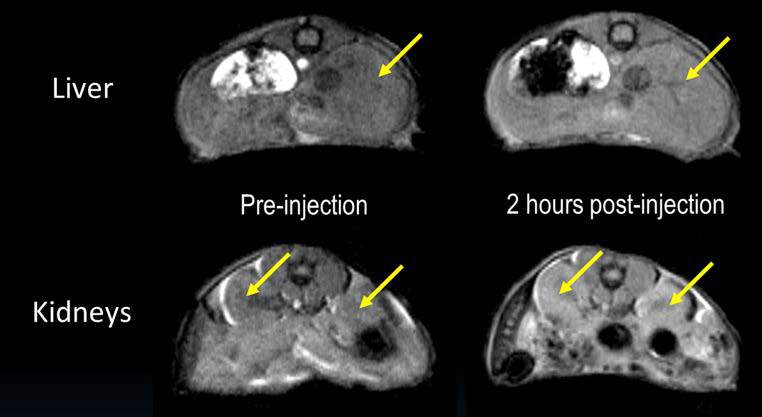Biomedical
Dual MR and Photoacoustic Imaging Contrast Agent
The technology
Technology summary
Contrast-enhanced MRI and CT imaging are widely used to diagnose soft tissue and vascular abnormalities. To enhance the contrast in MRI images, paramagnetic (Gd-based) compounds are desired as compound agents. However, safety concerns limit the use of Gd-based and iodinated MRI and CT contrast media in renal compromised patients- about 14% of the patient population. Not only are non-Gd contrast agents needed for patients with kidney impairment, they would provide safer and higher performance agents for the general patient population.
Researchers at VCU have developed an enhanced dual contrast agent that promotes safe, and effective renal clearance for patients with kidney impairments. This contrast agent not only provides increased safety and effectiveness, it also presents photo-acoustic imaging (PAI) capabilities. The key to this contrast agent is the development of a biocompatible nanoparticle with ultra-small (1-5 nm) size and a biocompatible coating that facilitates rapid renal clearance. Both elements that make up the composition of this agent are natural trace elements found in the body, and have higher contrast than gadolinium (Gd) at much lower dose, and are inherently less toxic than Gd. The effectiveness of this contrast agent can be seen in the attached figure (pre and post injection images for the kidney and liver) and has 1.5-2x higher MR contrast than Gd-based contrast agents.

Technology status
Successful in vivo mice testing completed.
